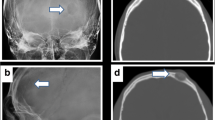Abstract
RJ is a 56-year-old woman who was told by her daughter that her right eye “looked bigger than her left.” She consulted her primary care doctor who told her she probably had Graves’ disease because of a history of thyroid problems, including treatment for hyperthyroidism with radioactive iodine 131 a number of years ago. An ophthalmologist was consulted who performed an examination and confirmed the presence of 5 mm of proptosis in her right eye. The remainder of the examination was normal including visual acuity in both eyes of 20/20.
You have full access to this open access chapter, Download chapter PDF
Similar content being viewed by others
Keywords
These keywords were added by machine and not by the authors. This process is experimental and the keywords may be updated as the learning algorithm improves.
RJ is a 56-year-old woman who was told by her daughter that her right eye “looked bigger than her left.” She consulted her primary care doctor who told her she probably had Graves’ disease because of a history of thyroid problems, including treatment for hyperthyroidism with radioactive iodine 131 a number of years ago. An ophthalmologist was consulted who performed an examination and confirmed the presence of 5 mm of proptosis in her right eye. The remainder of the examination was normal including visual acuity in both eyes of 20/20.
B-scan showed an oval encapsulated intraconal mass of over 20 mm in diameter. A-scan demonstrated high internal reflectivity in the anterior part of the lesion with a progressive decrease in spike height towards its posterior aspect (Fig. 1). No spontaneous vascularity was noted, and the tumor decreased in size about 20 % when moderately firm pressure was applied with the ultrasound probe against the globe. These findings were highly consistent with a cavernous hemangioma, and subsequent surgical excision confirmed this diagnosis.
Lacrimal gland enlargement by inflammatory or neoplastic involvement is a relatively common cause of temporal lid swelling in mild cases with inferior displacement of the globe in moderate-to-severe involvement of the gland.
Author information
Authors and Affiliations
Rights and permissions
Copyright information
© 2014 Springer Science+Business Media New York
About this chapter
Cite this chapter
Harrie, R.P., Kendall, C.J. (2014). Case Study 19 Cavernous Hemangioma. In: Clinical Ophthalmic Echography. Springer, New York, NY. https://doi.org/10.1007/978-1-4614-7082-3_19
Download citation
DOI: https://doi.org/10.1007/978-1-4614-7082-3_19
Published:
Publisher Name: Springer, New York, NY
Print ISBN: 978-1-4614-7081-6
Online ISBN: 978-1-4614-7082-3
eBook Packages: MedicineMedicine (R0)





